President Trump continued his assault on America’s wild, public lands this week, directing Secretary of Agriculture Brooke Rollins to rescind the longstanding rule protecting the nation’s roadless backcountry. Nearly 60 million acres of national forest lands in the United States are classified as “roadless” — a catch-all term for lands where human development is minimal and management is aimed at protecting the natural character of the intact habit these lands offer to everything from mule deer and elk along the spine of the Rockies to salmon and steelhead in the forests of southeast Alaska.
Until Monday of this week, designated roadless lands were protected from new and unpermitted road building, unnecessary and intrusive timber activity, and unpermitted development by the venerable National Roadless Area Conservation Rule (the Roadless Rule) that was first put in place in 2001 by the Clinton administration.
It was repealed, revisited and, in some cases, revised, under the George W. Bush administration, and then reinstated during the Obama administration. Colorado and Idaho crafted their own versions of the Roadless Rule — both are likely more protective than the original rule, and both were crafted by committees convened by state leaders to examine the importance of roadless areas to each state’s fish and game populations.
While it’s highly likely that conservation groups across the country will do what’s necessary to fight Trump’s repeal order by taking the government to court in hopes of prolonging the process, it’s important for anglers to understand what the Roadless Rule is, what it does and why it’s important to fishing, particularly on the vast public lands estate of the American West and in Alaska.
An attack on fish — and fishing — in the West
The repeal of the 25-year-old roadless rule may not sound as alarming as when bought-and-paid-for politicians, like U.S. Sen. Mike Lee from Utah — a shameless Republican shill for real estate and oil and gas interests that effectively sponsor his work in congress — works to brazenly sell off public lands to the highest bidder, make no mistake about it. Repealing the Roadless Rule could have significant impacts on America’s wild and native fisheries from coast to coast. And it will probably affect the quality of the West’s fishing, too.
The fact that Trump recognizes the industrial opportunities to be gained by making America less wild and more available to extractive industry should be enough to raise the antennae of any conservation-minded angler who understands the president’s mindset and has borne witness to history over the last decade or so. This is a president who gives lip service to anglers and hunters, but continues to chip away at the places we hunt and fish. We get to feel good because the president says he likes hunters and anglers; but our last wild landscapes, where our most important native fish live (and where many of us go fishing), are, if Trump gets his way, slated to be turned over to the whims of the drill bit, the mill saw, and the mining shovel.
America's roadless public lands are the healthiest non-wilderness lands in the country. They function as nurseries for migrating trout and spawning waters for increasingly rare salmon and steelhead. Their wild character trickles down into the West’s mighty rivers that start their downhill journey on roadless lands. Keeping them intact and healthy is important to the future of our fish and our fishing, not to mention for the health of our rivers and our communities.
A buffer against climate change; a source of clean water
Much, if not most, of the public land protected by the Roadless Rule is higher-elevation, cold-water habitat that serves as refugia for trout and salmon in a warming world. It's also the greatest source of clean water in the West. At least parts of all the great rivers in the American West are born as icy trickles or gurgling springs on roadless lands. Additionally, the nation’s intact forests, including roadless lands and wilderness areas, are massive carbon sinks — they absorb carbon dioxide from the atmosphere, mitigating the effects the harmful greenhouse gas has on the climate.
That the announcement comes just a month after Trump's “snap my fingers and make it happen” edict to boost American timber production by 25 percent offers some insight into the rollback. Largely off limits to logging for the last quarter of a century, the perception, it would appear, is that America's roadless lands are ripe with marketable trees and ready for the sawmill. Never mind that a full 50 percent of national forest lands are already available for permitted timber harvest.
What Trump and his team of “forestry professionals” are missing in the push to deregulate and remove “absurd obstacles to common sense management of our natural resources by rescinding the overly restrictive roadless rule,” as Rollins announced in a prepared statement this week, is that the nation’s timber inventory is already in place. It should be noted, too, that Rollins is a Texas attorney with absolutely no experience relevant to her position as secretary of Agriculture and a full-throated denier of climate change; U.S. Forest Service Chief Tom Schultz was appointed to his position after working for the Idaho Forest Group, one of the country’s largest timber producers.
The decision to rescind the Roadless Rule and expose the nation’s healthiest forests and most productive wild and native fish factories to eager extractive interests is based purely in politics, and not at all in science.
It has done what it was supposed to do
The Roadless Rule has proven over the last 25 years that it is a necessary tool to protect the healthiest backcountry lands in the United States. It’s a straight-forward executive rule with clear goals: prevent new development and road building on the healthiest, most intact and most connected public lands in the country.
Over the course of its productive life, not including periods of time where administrations or courts have injuncted it while legal maneuvers from conservatives and industry interests played out in hopes of overturning the rule or finding the rule to be somehow illegal or unconstitutional, the rule has done exactly what it was supposed to do. It’s been a landmark rule, and it’s played an outsized role in protecting and enhancing fish, wildlife, and their habitat, all while making fishing better on public lands all across America.

How so? Pick a native fish species in the American West and overlay a map of its current range atop a map of the roadless areas in the same region. The easiest example would be for westslope cutthroat trout, which are native to the Rocky Mountains, from the Missouri River drainage as far south as the Madison River drainage north into southern British Columbia and Alberta and west throughout western Montana, Idaho, Washington, and Oregon (see page 3 of this document). Now, take a look at the designated and inventoried roadless lands in the United States on this map. Notice anything? What’s left of our native west slope cutthroat trout habitat very nearly shadows what’s left of the roadless habitat in the same region.
As far back as the 1990s, when the Roadless Rule was but a vision for long-term habitat protection for native fish and irreplaceable herds of elk, mule deer, wild sheep, and goats, public lands land managers have known that the majority of these important species functioned best in wild, roadless habitat.
To wit, a 2001 report by the Center for Biological Diversity showed just how important roadless, wilderness and protected habitat within national parks was to native trout across the West. The report that’s still very likely relevant — perhaps even more so as the impacts of climate change have dramatically increased over time — noted that 62 percent of the conservation or strong populations of Colorado River cutthroat trout were found in drainages contained within roadless areas. For west slope cutthroat trout, that number was 75 percent. Bull trout? 76 percent. Greenback cutthroats? 75 percent. Gila trout? 99 percent.
A rule Congress should “act” on
It’s entirely possible that the Roadless Rule has kept some of these native trout species from declining and ending up being listed under federal Endangered Species Act lists. While the country’s more recognizable environmental accomplishments over the last 75 years, like the Wilderness Act, the Clean Water Act and the Endangered Species Act, have certainly done their part to protect and restore America’s natural resources, the Roadless Rule is likely responsible for slowing the tide of irresponsible natural resources development in the West and in Alaska, where roadless lands on the Tongass National Forest keep southeast Alaska’s wild salmon and steelhead in ample spawning habitat.
Rescinding this rule — and sadly, it’s only a rule — could have negative long-term effects on our fish and our fishing. As conservation groups dial up environmental lawyers on speed dial to appeal the Trump administration’s politically influenced decision to strip the protections from the country's last, best wild places, they ought to also find a few brave and willing elected officials in Congress who might be ready to champion the idea of the American Roadless Area Act. Codifying the rule would be perhaps the most ecologically beneficial act of Congress this century. Then, when the next cabal of timber company execs and climate deniers try and trash our fishing at the direction of an administration beholden to industry, the best of what’s left won’t be put in peril.


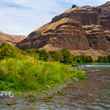

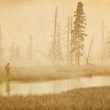
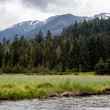
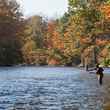
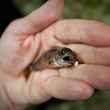
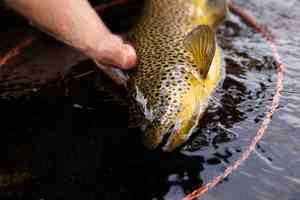
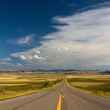


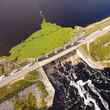
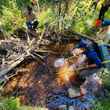

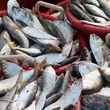

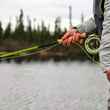

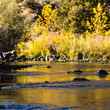

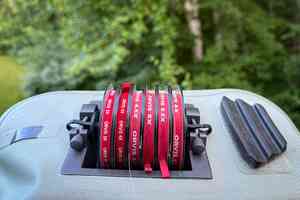
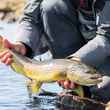
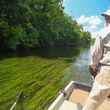
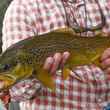
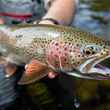


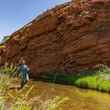
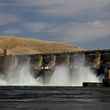

Comments
Kelly replied on Permalink
Thank you for this article, I appreciate the concise explanation of why roadless wilderness is vital to ecosystem function. I recommend Ben Goldfarb’s “Road Ecology” for anyone who wants to know more. (And he’s a fly fisherman, too.)
We all must speak up in defense of our public lands before it is too late.
Erik replied on Permalink
The amount of public land to be released to development is between 0.5% and 0.75%
Not even 1%.
Even the most astute among us could possibly notice the difference.
Utah has hundreds of millions of acres of desert wastelands that could be used to house industrial buildings that produce goods we all use the production of which can create adverse sound, air, or water pollution that should be very separate from people or vital waterways that are currently being produced in population dense areas of the world leading to real human suffering.
Ryan replied on Permalink
The bias of this article pails to shine a light on something I see as a far greater threat than the Roadless Rule. That is illegal's and homeless trashing areas. If there could have been a road to it before 1990, there would have been. The Forest Service prior to 1990 was maintaining 380,000 miles. Furthermore, almost all the Interstate Highway System was complete by 1992. Many urban roads were paved before 1990, especially during the mid-20th century. While some rural roads were paved earlier, particularly after the Good Roads Movement of the late 19th and early 20th centuries, many remained unpaved until later in the 20th century, with a significant increase in paving occurring before 1990. Yes, illegal immigration can contribute to littering in national forests, particularly those near the southern border. Unauthorized border crossings often leave behind trash, including food wrappers, water bottles, and other debris, that accumulates in these areas. In 2006 Forest Service Chief Dale Bosworth said this in front of Before the Subcommittee on Interior, Environment and Related Agencies. National Forest continues to experience cross-border violators creating unwanted trails and leaving large numbers of abandoned campfires and large amounts of trash on the Forest as they travel through the area. In 2005 nearly 500,000 cross-border violator apprehensions, averaging 30,000 per month, were made in the Tucson Sector alone. In addition, almost 99,000 pounds of marijuana worth nearly $198 million were seized while being transported through the Coronado National Forest. We all know there are many millions more here in the last 4 years. Every time I go fishing, I see one or more littering and fishing illegally. That is way bigger of a problem than any road being built.
Kelly replied on Permalink
You are talking about two completely different things here. Next time you are out fishing and you see one of them illegals doing something wrong, chuck one of your weighted treble hooks at them. That will teach em Buba!
Pat Price replied on Permalink
Chris, this is a horribly researched, propaganistic article full of unsubstantiated claims. First off, a 2 minute plunge into Secretary Rollins' background would reveal a degree from Texas A&M in agricultural development prior to her obtaining a law degree. Does that not give her some credentials to work in the Agriculture Department?
What is the mechanism that destroys fisheries through the management of designated roadless areas. If this assertion were true, then by extension, there would be no fresh water fisheries left in the world. Between private development and lawful land management activities, if your unsubstantiated claims were true, our fisheries would have been lost a century ago. Many of the roadless rule designated areas are in headwater streams, where there are no fisheries. They are too steep, too small, and sometimes intermittent and don't support fish populations. Having worked for the Forest Service for over 30 years, mostly as a fish biologist, I have studied the effects of land management on fish populations extensively. After 30 years of working on timber sale projects, we had roughly the same levels of fish populations when I retired as we did when I started. And I worked on one of the more productive timber forests in Montana. I spent my career combating flimsy accusations by so-called "environmentalists" making emotional, factless claims to persuade judges and their cronies of the evils of lawful land management. While your article may be popular with the fly fishing crowd, it is a disservice to fact-based discussions about when and where land management activities should be conducted. No one ever complains about 10 acres of fragile desert ecosystem being paved around Phoenix for a new subdivision, but try to manage a renewable resource for future generations and you're the devil.
Please try to do a better job with your "journalism" in the future.
Pages